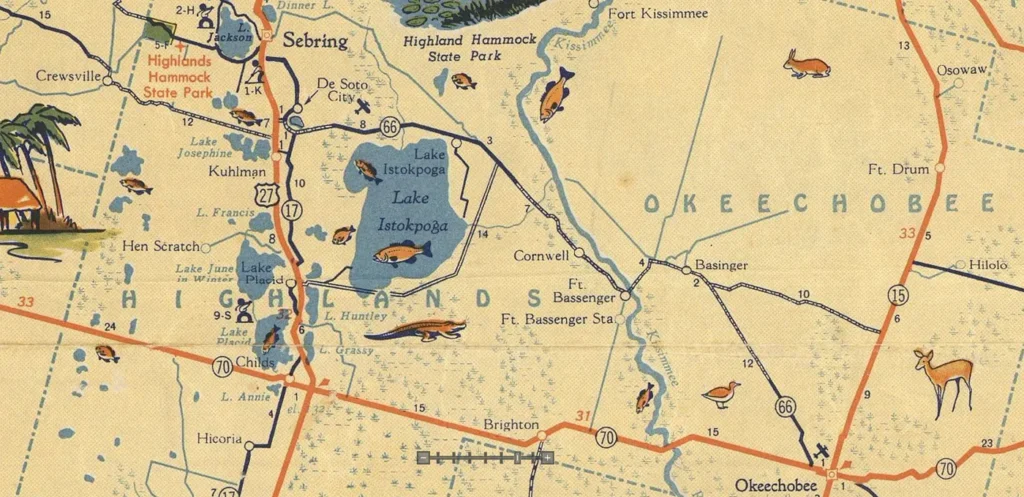
Since just about 1837 there has been confusion over the name of the Seminole Wars fort and its sister towns on opposite sides of the Kissimmee River .
Growing up, I guess I was a bit of a nerd. I loved maps! I studied every name and curve. Almost thirty years later, I guess I’m still a map nerd. Staring at maps and wondering what the origins were of these mysteriously named places is a big part of what sparked my interest in local history.
One of the things that I remember observing as a kid was the different spellings of Bassenger/Bassinger/Basinger on different sides of the Kissimmee River. Clearly, they were both named after the same thing. So which was it? Which was right, Okeechobee County or Highlands County?
The fort was established in 1837 by the army as part of a string of forts during the Seminole Wars. It was named in honor of William E. Basinger, an officer who died at the Dade Massacre in 1835 at just 29 years old.
Original maps from those early years show it spelled correctly as “Fort Basinger,” but oral communication and poor documentation led to its evolution from there. In the 1840s, some maps show it correctly, while others perhaps liked to pronounce it “Baa-sin-ger” rather than “Bay-sin-ger” and added a second “s” to make it Fort Bassinger.
Some maps in the 1860s and 1870s got really creative and decided to make it a lake and spell it “L. Bassehgor.”

The fort was abandoned in 1850, and the surrounding area remained largely unsettled (except by Seminole Indians) until after the Civil War. A few pioneer families started creeping in in the 1870s, mostly cattle ranchers. Captain John Mizell Pearce was deeded 150 acres of land, including the old fort in 1880, adding to his existing ranch holdings. The Pearce family became one of the first to settle in what would become Highlands County.
With no railroads and only sandy trails, travel into the inland of Florida was extremely difficult in the 1880s. However, steamboat service along the snake-like Kissimmee River opened the area to settlement. With several settlements like Bluff Hammock, Fort Kissimmee, and Kicco to the north, a small regional transportation hub sprung up around the old fort.
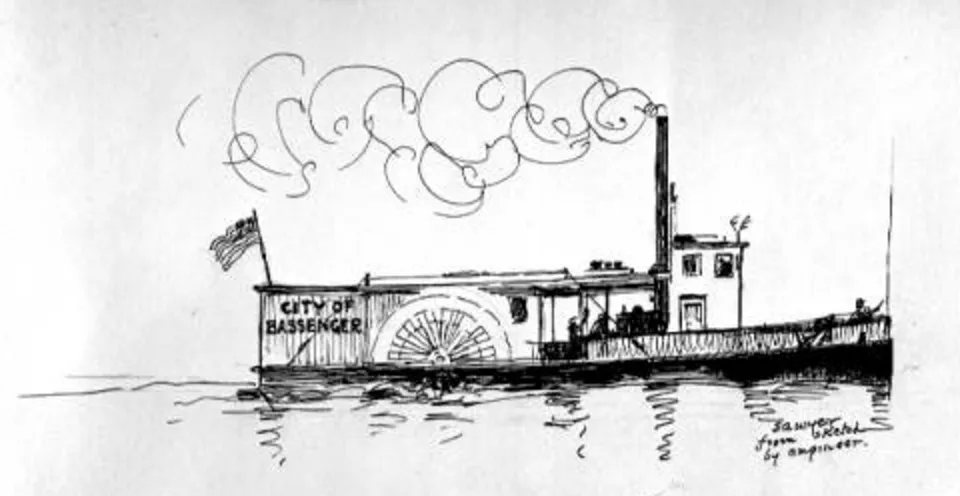
Ferry service was offered across the river. Steamboats took passengers north to Kissimmee, which connected the town to the railroad system. Before it was straightened (which turned out to be an environmental disaster), the river notoriously wound and bent its way northward to its Kissimmee terminus, causing the trip to take five days to complete.
In the 1890s, most commercial operations shifted to the east side of the river. Around the turn of the century, the community was said to be a bustling little cowboy town. The population crested with around 338 people on the Okeechobee County side and another 165 living on the Highlands County side, according to the 1900 Census. It was the first real town in what would become Okeechobee County, featuring two hotels, a general store, a clothing store, a schoolhouse, a church, and thriving social activities.
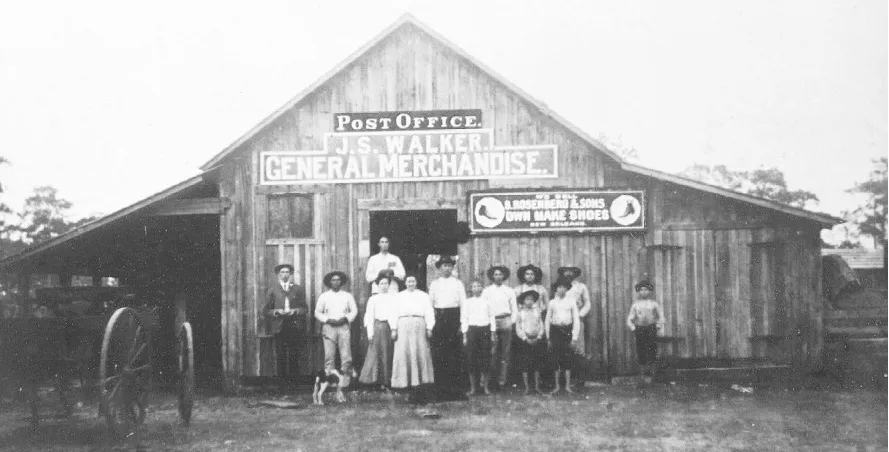
The first post office was founded in 1893 under the name “Bassenger” (with an “e”) and remained open until 1918. The once vibrant town started to dry up when the railroad bypassed it in favor of Okeechobee in 1915 and the highway system ignored it for a route further south through Brighton when State Road 8 was constructed.
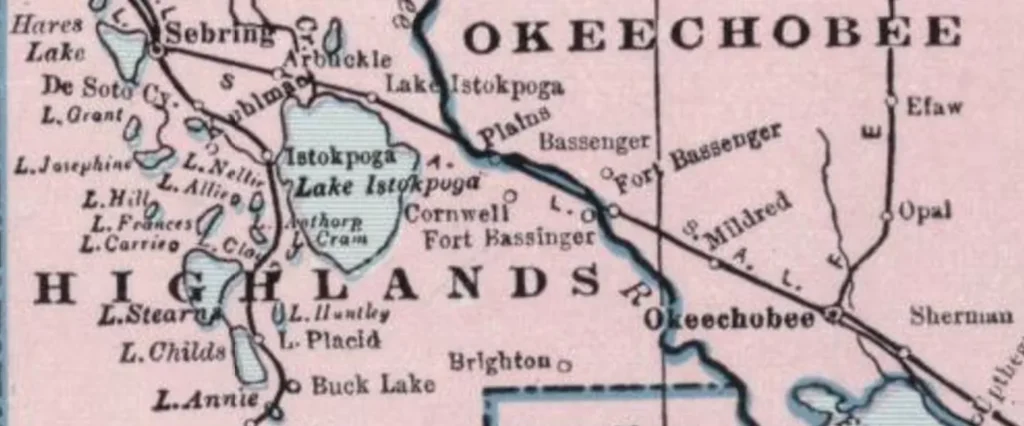
Judging from World War 1 draft cards, however, the “i”s favored the “e”s by a count of 17-to-13. And of those claiming to be from the Fort side, two-thirds used the “i” spelling. Conversely, the US Census always recognized the sister towns of Fort Bassenger and Bassenger between 1890 and 1930.
Hopes for both towns were rekindled during the Great Florida Land Boom. Huge land deals were struck on both sides of the river that investors believed would turn into quick millions — they did not. The real estate company “Fort Bassinger Corporation” was incorporated in 1925, but the “Bassenger Development Corporation” was started in 1926.

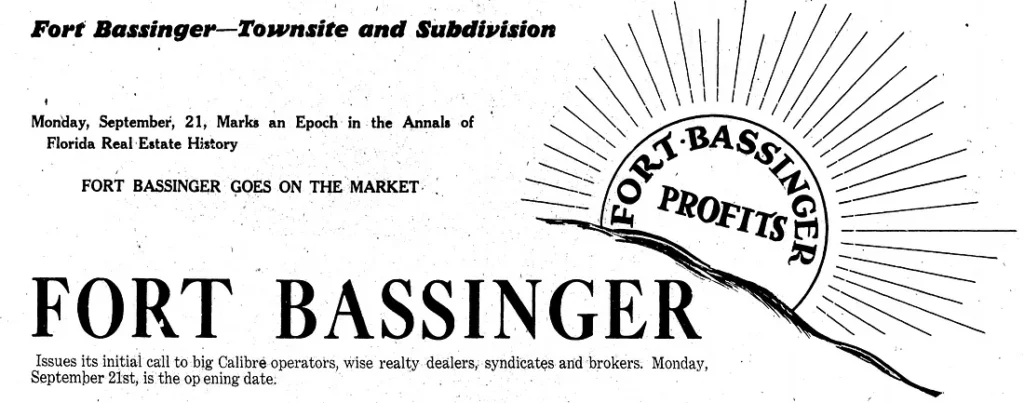
The peak of the boom meant speculation was running wild. This time on the fort-side of the river in Highlands County, a new post office was granted, with the name “Fort Bassinger.” However, the various newspaper ads hailing that it would “become a city with 5,000 to 8,000 population… within five years or less” could not agree on the spelling.
The Miami Herald archives show 33 mentions of “Bassinger” and 132 references to “Bassenger” from 1910–1939. The Palm Beach Post concurs with 19 “Bassinger” to 106 “Bassenger” between 1920 and 1939.
So despite the name granted to the new official post office, the “e” spelling seemed to win the media vote. The Seaboard Railroad agreed and used “Fort Bassenger Station” as their local freight stop starting in 1925.
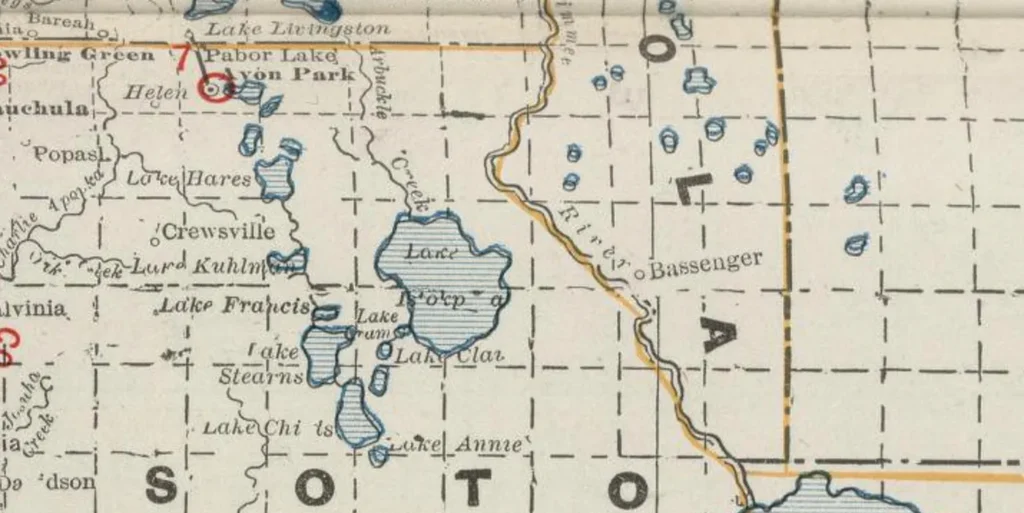
However, to make it even more confusing, in 1933, a post office was reinstated on the Okeechobee County side, and it was named “Bassinger.” Church records from that period all seem to say the same. At least some of these records appear to have been ambiguously corrected.
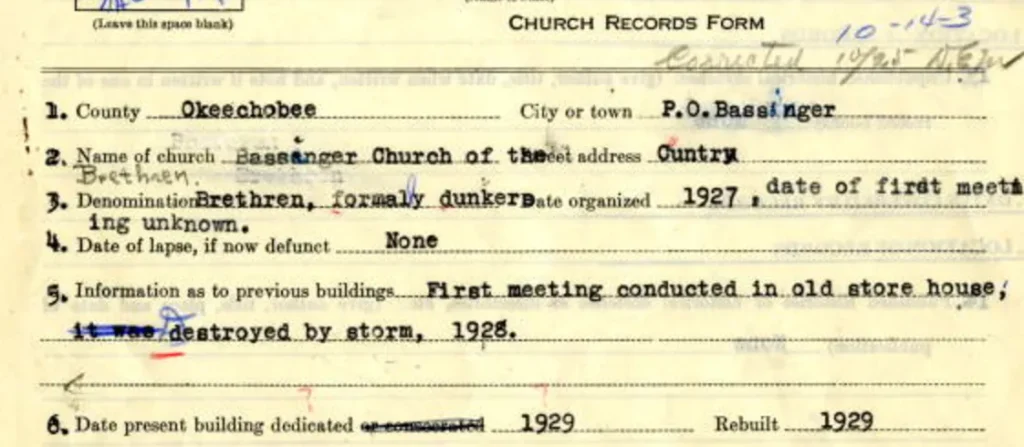
Finally, the mystery was solved when historians began to speak up, seeking to correct the fallen 1st Lieutenant’s legacy. In October 1940, the namesake town was officially renamed back to “Fort Basinger” with a formal celebration. The Seaboard Railway led the festivities, replacing the sign at the station. It was attended by relatives of William Basinger, residents of both sides of the river, and other local dignitaries. Its sister town of “Basinger” soon followed suit with the correction.
However, memories and habits are hard to break, and the differences in opinion continued. Official documents, newspaper reports, and accounts by residents conflicted with each other — sometimes with the same paragraph. Not until about 50 years later, in the 1990s, did the spelling dispute settle in as Basinger, and most new references finally agree!


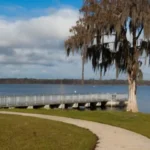



One response to “Is it Fort Basinger or Bassenger or Bassinger…?”
[…] of DeSoto County). The only tiny collections of humanity were centered around Avon Park, Venus, and Fort Basinger. The small black settlement called Niggertown Knoll had already vanished. The rest of the county […]